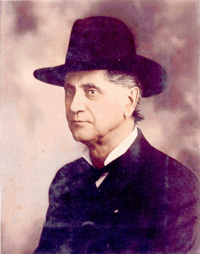Crater Lake National Park: Administrative History by Harlan D. Unrau and Stephen Mark, 1987
APPENDIX A2: Biographical Sketch Of Early Career Of William Gladstone Steel: 1854-1893
William Gladstone Steel was born in Stafford, Ohio, on September 7, 1854. His father William Steel was born in Biggar, Scotland, on August 26, 1809, and emigrated to the United States with his parents in 1817. The family first settled near Winchester, Virginia, but soon moved to Monroe County, Ohio. From 1830 until the Civil War Steel was a leader in the “Underground Railroad” in southeastern Ohio. It is reported that the slaveholders of Virginia offered $5,000 for his head at one point and that he offered to bring it to them if the money were placed in responsible hands. He acquired a fortune as a merchant, but lost it in 1844. As a leading abolitionist in southeastern Ohio, Steel was a Liberty Party candidate for the House of Representatives in the early 1840s, and in 1844 he circulated in eastern Ohio a petition, whose signers agreed to vote for Henry Clay if he would emancipate his one slave. By virtue of holding the balance of power, the Liberty Party played an important part in the presidential election that year, when it was responsible for the defeat of Clay.
The mother of William G. Steel (Elizabeth Lowry) was a native of Virginia. Her ancestors were among the early Dutch colonial settlers of Pennsylvania.
As a youth William G. Steel attended a district school five miles from his home in Ohio. During the 1860s his family moved to southeastern Kansas. When his family moved to Portland, Oregon, in 1872, he attended a high school for eighteen months. After leaving school he was apprenticed to Smith Brothers, iron manufacturers, to learn the trade of pattern making. He worked in that capacity for three years and then engaged in newspaper work. In the fall of 1879 he moved to Albany and established the Albany Herald for the purpose of carrying the county for the Republican Party. The effort proved unsuccessful, and in 1880 he sold the paper and returned to Portland, where he and his brother David began publication of the Resources of Oregon and Washington. The enterprise was supported by Henry Villard, a prominent financier who reorganized the Northern Pacific Railroad in 1881 and oversaw the completion of its route from Lake Superior to Portland two years later. The publication was discontinued upon Villard’s financial collapse soon thereafter. Steel then secured a position as substitute letter carrier in Portland and was promoted to the position of superintendent which he filled until Grover Cleveland became president in 1885. He next engaged in the real estate business, and in 1891 the firm of Wilbur & Steel was formed. Two years earlier Steel and C. Heald projected a railroad from Drain in Douglas County to the mouth of the Umpqua River and Coos Bay.
H.K. Hines, An Illustrated History of the State of Oregon (Chicago, 1893), pp. 588-89, and A. Cooper Allen, “The Guardian of Crater Lake,” Sunset Magazine, LVI (May, 1926), 51-52.
***previous*** — ***next***


